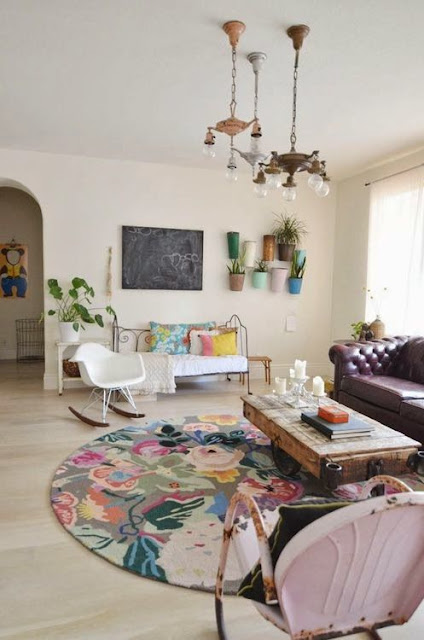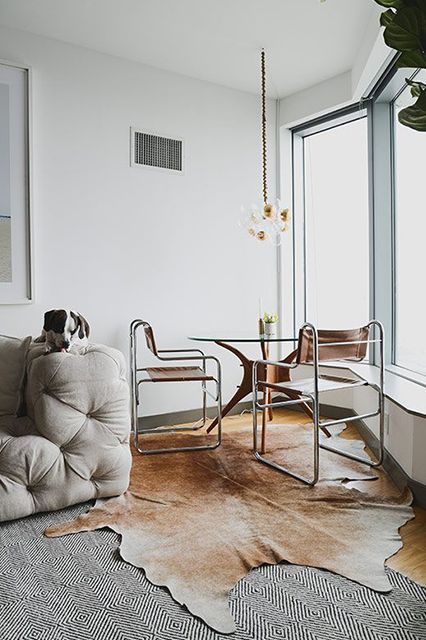The toughest part of picking a rug is figuring out the size you need. There are a few conventional rules that most people follow. It is important to consider the scale of your room and the placement of furniture around the rug. When in doubt, a great rule of thumb is bigger is better.
World Market's Blog has a couple of useful diagrams that can help you visualize size and placement:
Starting from there, you can further your space with a good use of all design elements: balance, unity/harmony, scale, color, texture, space, and form. A combination of these will create the ultimate balanced and harmonic space.
When considering a rug, it is perfectly fine to break away from convention. Just consider the design elements. The color, pattern, and texture can affect the presence the rug has in a room. A bolder rug may actually feel larger than it actually is, if paired with cleaner lines and design elements. If the rug is more monochromatic, you will probably need a much larger rug to make it feel big enough for the space. In short, visual weight is more important than actual size.
When picking a pattern or color or texture, consider the other objects in the room and how the rug will contribute to the design elements. Contrast is always good. A lighter shade rug works with dark walls and vice versa. If you are missing some texture or color in your room, your rug is a good way to add it.
As humans, we have a need to find order. You might think straight is orderly, but the rug above demonstrates otherwise. Balance is not always created with symmetry. We are loving the way this rug is turned "crooked". It's bold color and adventurous position provide a powerful draw to to this room.
Love a rug, but know it just isn't big enough for your room? Not to worry - just layer up! This is a great way to incorporate more texture or color.
One convention that we are often afraid to break away from is using a round rug with something other than a round table. It is possible. The scale of this rug works great with the furniture and layout of the room, as well as the colors!
Smaller rugs are great for grouping areas of a room. In the above example, the designer created a visual space for this dining set. She also layered rugs with different textures and patterns for great contrast. Need more inspiration? See rug examples that help balance each space, broken up by rooms:
1. Foyer
This foyer has a great use of contrast as well as complimentary colors.
See our past blog on use of Complimentary Colors!
2. Kitchen
3. Dining
Check out that table! Our Trend Alert this month is Live Edge Wood.
Be sure to read all about it!
4. Living
4. Bedroom
We love this placement of a bedroom rug! Instead of centering it to the bed itself, let it flank the bed.
5. Bathroom





















No comments:
Post a Comment